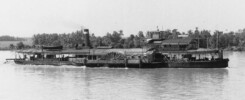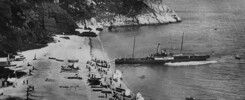One of the earliest navigational wonders to harness the power of electricity was radar. Developed during the period 1935 to 1940 in various countries as a military instrument for detecting ships and aircraft, radar was pioneered in the UK by Sir Robert Watson-Watt. The basic principle of radar is that electromagnetic waves are sent out from the scanner, those hitting an object are reflected back to the receiver and this information is then processed through a cathode ray tube to produce a visible image.
During the Second World war much progress was made in developing this then top secret technology. With the coming of the peace, radar began to become more widely available commercially and was acquired for some merchant ships. It was very expensive to buy and this, coupled with a wonder about its complexity and fears about its reliability, led many companies to place severe restrictions on its use. After all you wouldn’t want to waste such an expensive item and wear it out in fine weather when you could see where you were going if that meant that when the fog came in and you needed it, you found that it had blown a valve through too much use. So it was not uncommon for the set on the bridge to be kept in a locked box to which only the captain had a key and he would often be unwilling to unlock it.

The first paddle steamer ever to be fitted with this wonder kit was the Humber ferry Tattershall Castle (pictured above). This was installed in January 1948 and cost £3,000, a very considerable sum then and worth approaching £100K in today’s money. The Hull Daily Mail for 8th December 1947 reported:
In view of the fact that the Humber Ferry passenger steamers carry over one million passengers a year across the river in practically all weathers, it will be appreciated that under the worst fog conditions the masters of the ferry boats have serious responsibilities in deciding whether the conditions make it possible to cross in safety with so many lives at stake. The radar equipment with which the Tattershall Castle will be fitted to help with this will be the latest type available for close range river conditions.
On 28th February 1948 the same newspaper carried on:
Today for the first time in its one hundred year history the Humber Ferry was not delayed by fog, although visibility was down to forty yards at periods during the morning. Whilst trawlers which had left St Andrew’s Dock dropped anchor until it cleared the Tattershall Castle steamed steadily and confidently between Hull and New Holland.
This morning, for the first time, conditions on the river were bad enough to warrant its use. It told me everything I wanted to know” said Captain N Waldie, after he had made two round trips. Not until after he had left New Holland at 8.25am did conditions get really bad and visibility went down to forty yards. But watching the green ray sweeping over the fluorescent screen installed on the bridge, he was able to bring the ferry boat successfully through the shoals and currents until Victoria Pier loomed out of the mist.
As a result of the success of this, the Tattershall Castle’s sisters Wingfield Castle and Lincoln Castle were also subsequently fitted.
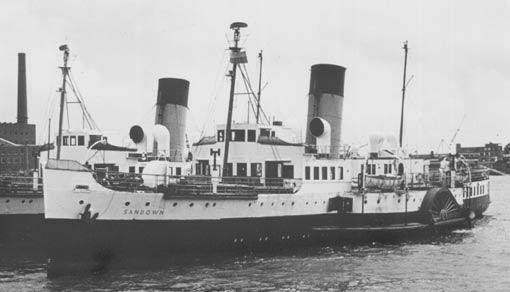
Two years later in 1950 on the South Coast, the Portsmouth to Ryde paddle steamers the Ryde and the Sandown (pictured above) were given their first radars, the scanners being planted on the top of their specially shortened foremasts. The third Portsmouth paddler the Whippingham was not so lucky. She remained radarless for her whole career, the cost of fitting such a device being thought to be too exorbitant for a ship which ran only on a limited number of days each year and primarily only in the summer when fog was thought to be less likely.
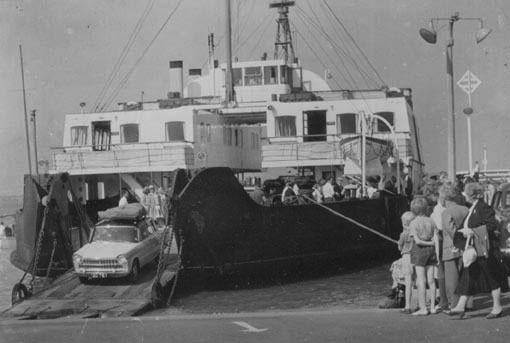
At the other end of the Solent, the Lymington to Yarmouth Diesel electric paddle vessel Farringford (pictured above) acquired radar at some stage between 1950 and 1954.
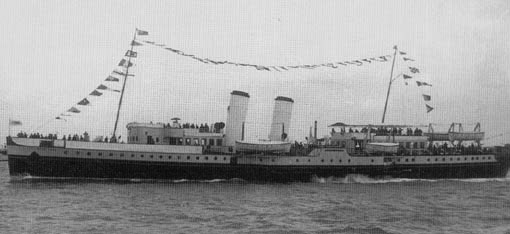
The earliest excursion paddle steamer not owned by a rich nationalised railway company to be fitted with radar was P & A Campbell’s Bristol Queen (pictured above) which had a set put on for her visit to the Coronation Review in the Solent in June 1953. It is intriguing to wonder why she was so fitted at that time as the other two Campbell steamers there, the Cardiff Queen and the Glen Gower, didn’t have one. We do know that Bristol Queen’s main charter was for high ranking industrialists. Did Marconi or some other company put one on specially for the event as a demonstration to plug this new technological wonder? Does anyone out there know? In any event, it was taken off again after the review and Bristol Queen remained without this aid to navigation until her last season in 1967 when a set was installed in a tiny shed arrangement at the aft end of the open bridge.
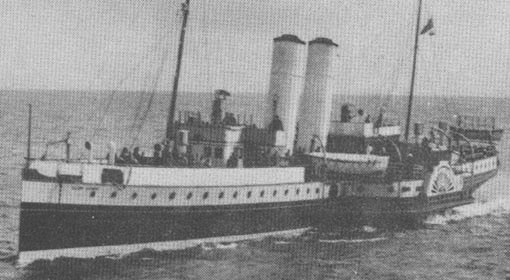
Three years after the Coronation Review, in 1956, the Glen Gower (pictured above) received a radar for her Cross Channel work for her last season on the South Coast running from Brighton, Eastbourne and Hastings. The other paddle steamers in the P & A Campbell fleet remained radarless to the end.
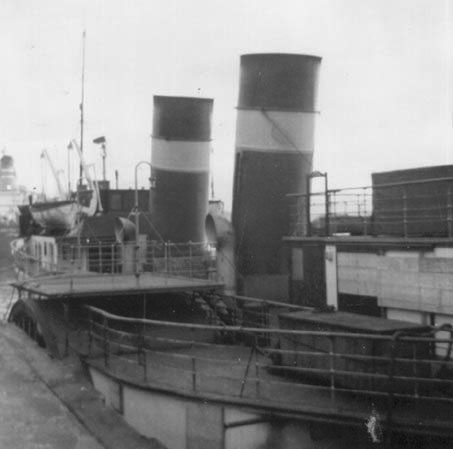
On the Clyde the Caledonia, Waverley, Talisman and Jeanie Deans (pictured above at Greenock in November 1965 about to set off for a new life on the Thames) were fitted with radar around 1959/1960.
But that is about it for radars on excursion paddle steamers in the UK so far as I can think. Cosens may have considered it for their steamers but none was ever fitted even though the Embassy was still sailing in 1966 by which time radar was becoming much more common. Red Funnel fitted it on the Balmoral, the Vecta and subsequent ships but not on their paddlers. Medway Queen had none nor did the Maid of the Loch. And I don’t believe that any of the other UK excursion paddlers withdrawn and scrapped in the 1950s and 1960s had it unless anyone out there can think of any I may have missed.
Today radar is so comparatively cheap that it is pretty much universal. Most sea-going ships have at least two and some considerably more with cross channel ferries, for example, having extra scanners low down near the bow and or the stern to get a better view for docking.
With their greatly enhanced reliability radars are no longer kept in locked boxes with the key in the safe keeping of the captain. And if they were still in business today even companies as careful with their pennies as Cosens & Co might have been persuaded to buy one!
Mike Riley emailed to say:
Just a note to thank you for the most interesting pictures and descriptions of the month which you kindly put on the site for the benefit of us all.
I did not know Bristol Queen spent so many years without radar, but I understand that when she was scrapped her system was transferred to St. Trillo.
Kingswear Castle returned to service in 2023 after the first part of a major rebuild which is designed to set her up for the next 25 years running on the River Dart. The Paddle Steamer Kingswear Castle Trust is now fund raising for the second phase of the rebuild. You can read more about the rebuilds and how you can help if you can here.
John Megoran

